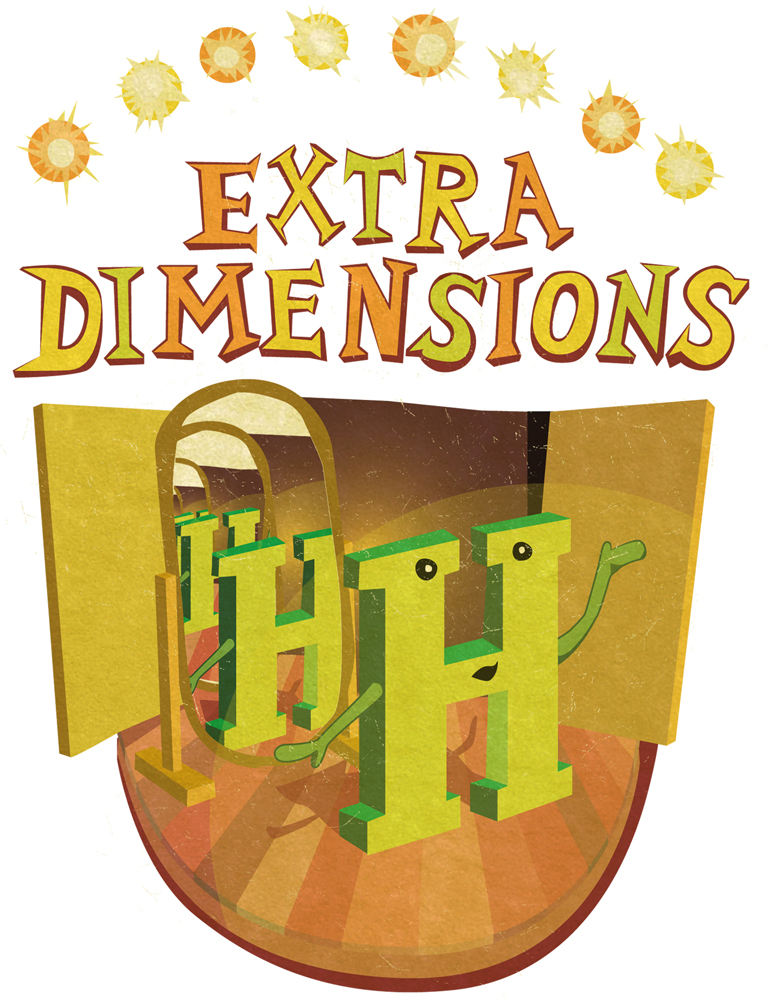On July 4, scientists around the world popped open champagne bottles and toasted the culmination of nearly five decades of research. They had discovered a new particle, one that looked awfully similar to the long-sought Higgs boson.
The Higgs boson has for decades been the last missing piece of the Standard Model of particle physics. But even if the new particle completes the puzzle, some of its pieces still refuse to fit.
“If it’s the Standard Model Higgs boson, the picture will be complete, but it won’t be satisfying,” says Eilam Gross, co-convener of the ATLAS Higgs physics group. “There are questions we can only begin to answer by going beyond the Standard Model.”
As the theory tells it, particles gain mass by wading through a kind of force field. Imagine holding a handful of sand. Cup your hands together and apply some pressure. Open your hands. If the sand is dry, it shifts and dissipates. If it’s wet, it’ll hold the shape you pressed it into. The idea is the same for how particles gain mass. Just as the sand gains a new shape depending on its level of moisture, particles gain mass depending on their level of interaction with the Higgs field.
In return, the Higgs boson gains mass through its interactions with other particles—and through its interactions with itself.
Interactions with one group of particles add huge amounts of mass to the Higgs, and interactions with another, smaller group of particles subtract it. Although the Standard Model itself does not predict a specific mass for the Higgs, when other concepts and theories are considered, the mass of the Higgs can add up to an astronomical number. Considering this, the mass at which scientists found the possible Higgs, about 125 gigaelectronvolts, can seem surprisingly small.
If the particle is indeed a Higgs boson, theories beyond the Standard Model can account for its confusing mass. Three popular explanations involve the ideas of supersymmetry, compositeness and extra dimensions.
The supersymmetric Higgs: More new particles
One way to tweak the calculation of the Higgs mass is to add new variables into the equation. The theory of supersymmetry postulates that every elementary particle has a partner particle. Conveniently, each of these partner particles has an opposite effect on the Higgs mass. One partner adds to the mass; the other takes it away.
But they don’t completely cancel one another out. The partner particles in theories of supersymmetry are super-partners, particles that mirror the particles in the original Standard Model set but have more mass. When you add super-partners to the mix, the math of the Higgs mass nearly balances out.
“That’s one of the reasons everyone loves supersymmetry,” says Fermilab physicist Don Lincoln, who is part of the CMS experiment at the Large Hadron Collider and the DZero experiment at the Tevatron.
Another reason is that, if scientists find that this new boson is a supersymmetric Higgs, they’ll know a whole new collection of partner particles is out there, waiting to be found. One of those super-partners, a massive particle called a neutralino, might even turn out to be dark matter, the mysterious substance thought to make up about 25 percent of our universe.
The composite Higgs: Even smaller particles
Some theorists have proposed a different solution for the Higgs’ mass. They’re exploring the idea of a composite Higgs particle—a particle that behaves like the Standard Model Higgs boson, but is made up of even smaller particles.
Calculating the mass of a composite Higgs particle would be different from calculating the mass of a fundamental, unbreakable Higgs. If the Higgs were made up of tinier pieces, its mass would consist of the mass of those pieces plus the energy of the force holding them together. That could add up to 125 gigaelectronvolts.
A composite Higgs would shake up the world of particle physics. If the Higgs were made up of smaller particles, other particles we currently view as the fundamental building blocks of the universe could be made up of smaller particles as well. Compositeness could birth a new layer of fundamental physics, from which completely new theories would spring.
Extra dimensions: New worlds
A third explanation for the Higgs' mass is that we simply are not seeing it all because we’re not studying it in all of its dimensions.
“If I do a calculation in three-dimensional space, I get a different answer than if I do a calculation in five-dimensional space,” says Fermilab theorist Joe Lykken. “The effects you thought were going to be large [in three-dimensional space] now are not large.”
Scientists explain the weakness of gravity in a similar fashion. Gravity may keep us on the ground, but compared to the other forces in our universe, it’s a total wimp. If gravity were as strong as the other forces, even a coffee mug would be too heavy for a person to lift.
But it might be that the force of gravity actually exists in more than just three dimensions of space. It only seems weak because not all of its force resides in dimensions we can detect.
In the same way, the calculations that predict the Higgs' mass could be tempered by the effect of dimensions beyond our own.
Discovering extra dimensions could help scientists understand gravity and its relation to the other forces in the universe. It could also embolden string theorists, whose theories expand our universe into at least 11 dimensions of space.
The excitement builds
Even if the new particle is the Standard Model Higgs, “we will still have questions,” says CERN theorist Christophe Grojean. “Just adding one more fundamental particle does not bring us the fundamental answer.”
That’s because the Standard Model is not the theory of everything. With the confirmation of the Standard Model Higgs boson, the theory would be whole—but not comprehensive. Scientists would still need to solve the mysteries of dark energy, dark matter and the weakness of gravity, among others.
Finding out that the new particle is not a Standard Model Higgs—or finding out that it’s not a Higgs at all—could offer scientists a roadmap of where to search next. “If it’s the Standard Model Higgs boson, that’s great, but it doesn’t offer any experimental clues of where we should look next,” says Albert De Roeck, co-convener of the CMS Higgs physics group.
The story of the new, Higgs-like particle is far from over, a fact that’s keeping the excitement at the LHC palpable. Physicists are eager to see where the data takes them next.
Note: An earlier version of this article included a misleading statement: "According to the Standard Model, the mass of the Higgs boson should be enormous." In fact, the Standard Model itself does not predict the mass of the Higgs boson. It is only when other concepts, such as quantum mechanics, are also considered that a prediction can be made.










